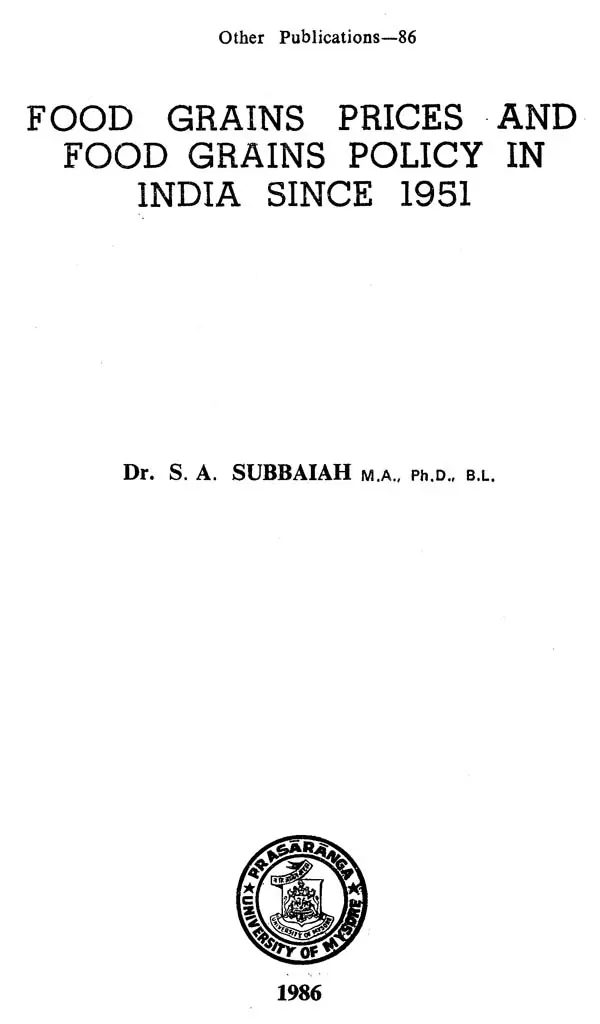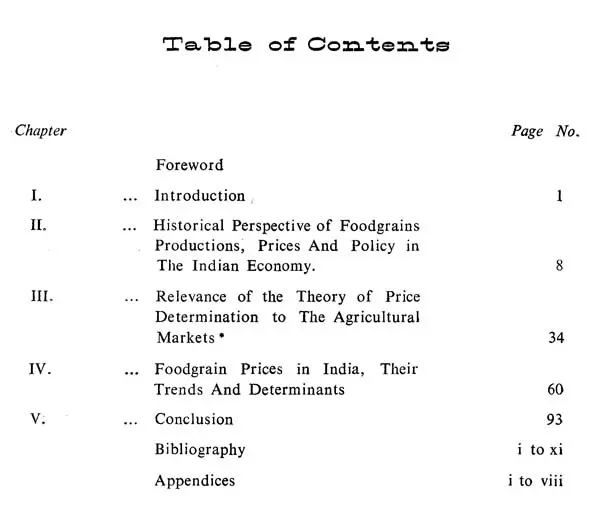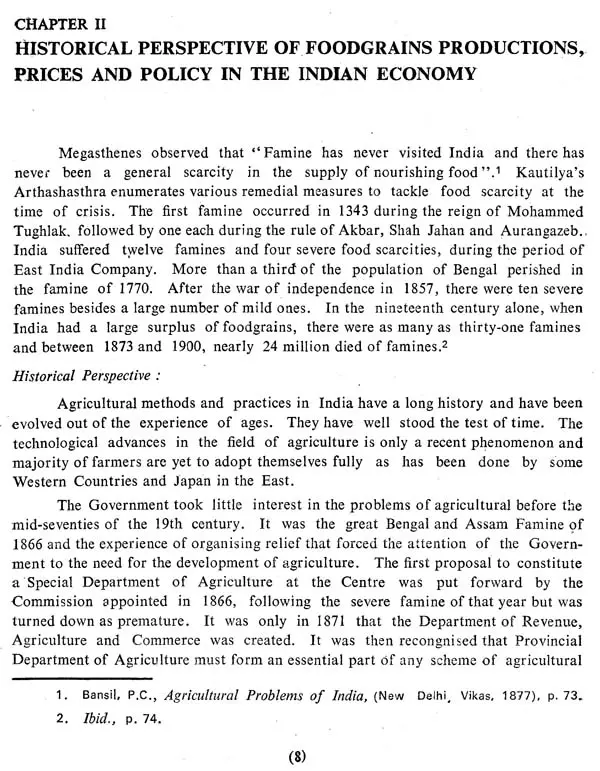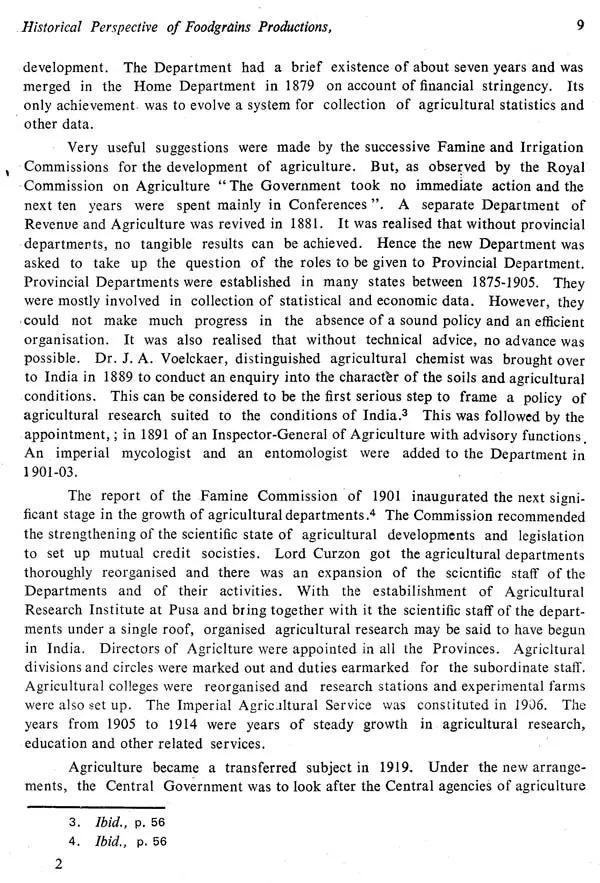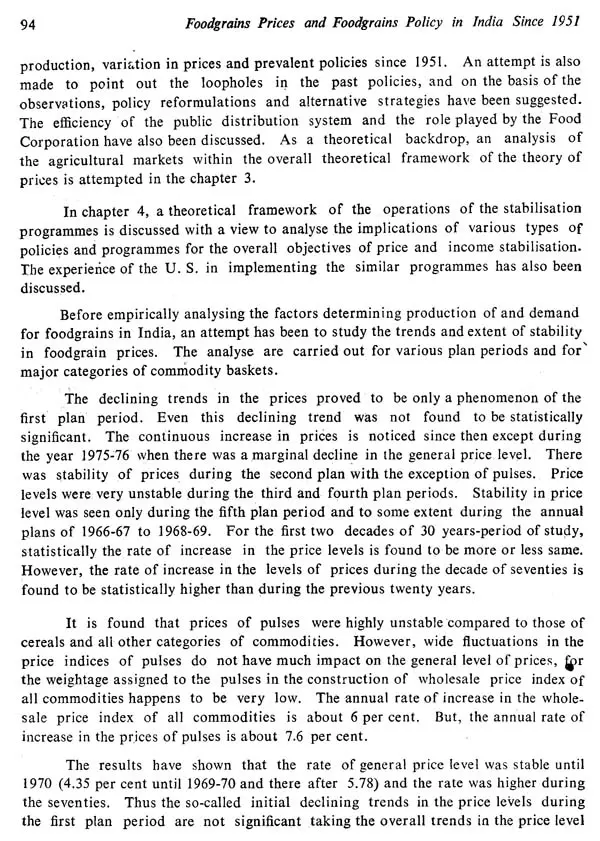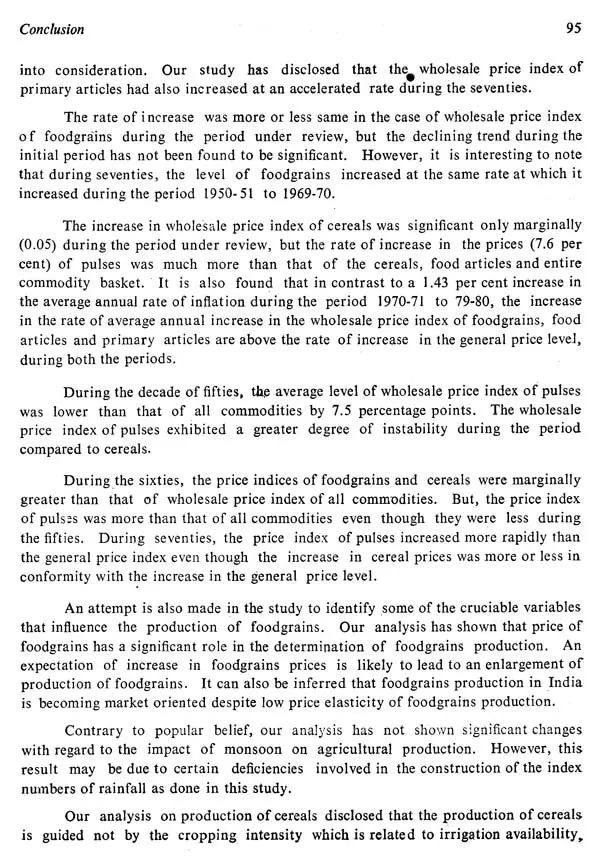
Food Grains Prices and Food Grains Policy in India Since 1951 (An Old and Rare Book)
Book Specification
| Item Code: | UAK076 |
| Author: | S. A. Subbaiah |
| Publisher: | University of Mysore, Mysore |
| Language: | English |
| Edition: | 1986 |
| Pages: | 110 |
| Cover: | PAPERBACK |
| Other Details | 10.00 X 7.50 inch |
| Weight | 240 gm |
Book Description
This book is about the foodgrains prices and foodgrains policy in India since the beginning of the First Five Year Plan. As we are aware, the agricultural sector has had and does have a key role in the process of Socio-Economic Development of the country. More than forty per cent of the gross domestic product in the country is derived from the agricultural sector and over seventy per cent of the population is living in rural areas. The Agricultural Sector not only provides food to the growing population but also raw-material inputs to many of our industries. As a result of the developmental efforts under the Five Year Plans, India's food production went up from 55 million tons in 1950-51 to nearly 150 million tons in 1984-85. However during the same period, the total population of India increased from 360 million to nearly 750 million. Therefore, changes in food grains and supply will have lot of repercussions on different sectors of the Indian economy. Any food grains policy should assure not only a reasonable income to the farmers but also adequate supply of food to the consumers at reasonable prices. Dr. Subbaiah has made a pioneering effort in this work in studying the food. production trends, prices and policies of the government during the past three and a half decades. He has reviewed the public distribution system and the recent Twenty Point economic programme with the objective to assess their impact on farm production and the distribution of foodgrains in the economy. Moreover, he has highlighted the relevance and the usefulness of the price theory in determining the foodgrains prices and fluctuations in the prices of foodgrains. He has suggested a dynamic foodgrains policy for the coming years which should provide guidelines to the economic planners and policy makers in the country. I wholeheartedly congratulate Dr. Subbaiah for bringing out this fine piece of research in the form of a book. I am quite confident that this book should prove immensely useful to researchers, teachers, students and the policy makers in India and abroad.
**Contents and Sample Pages**
